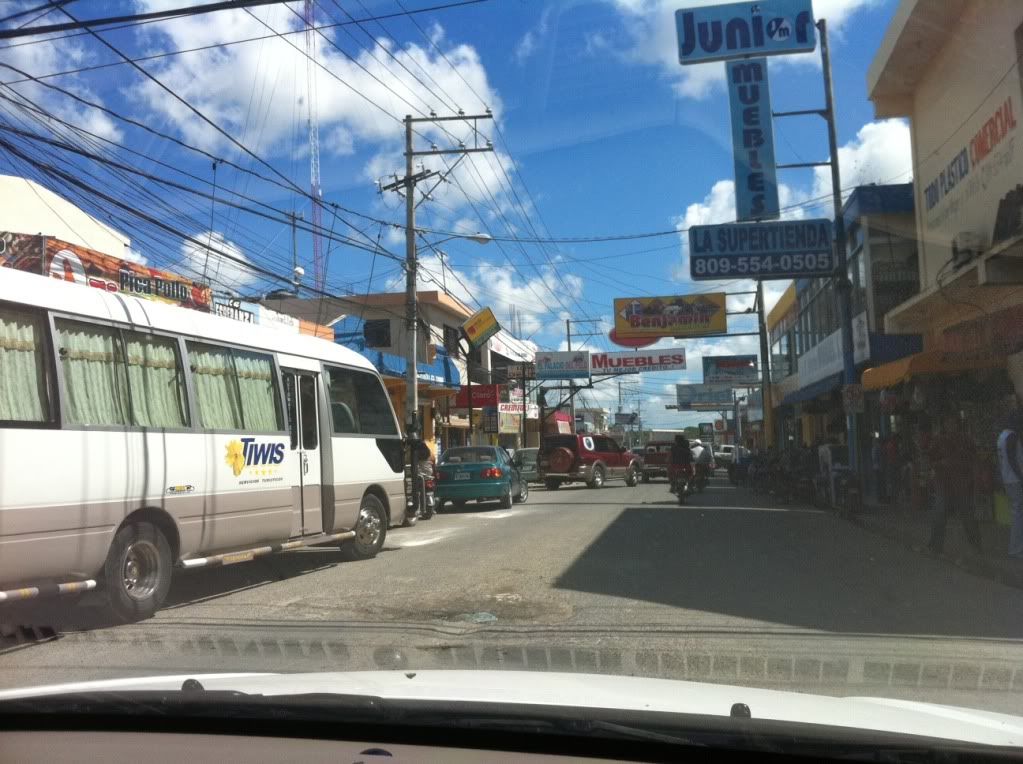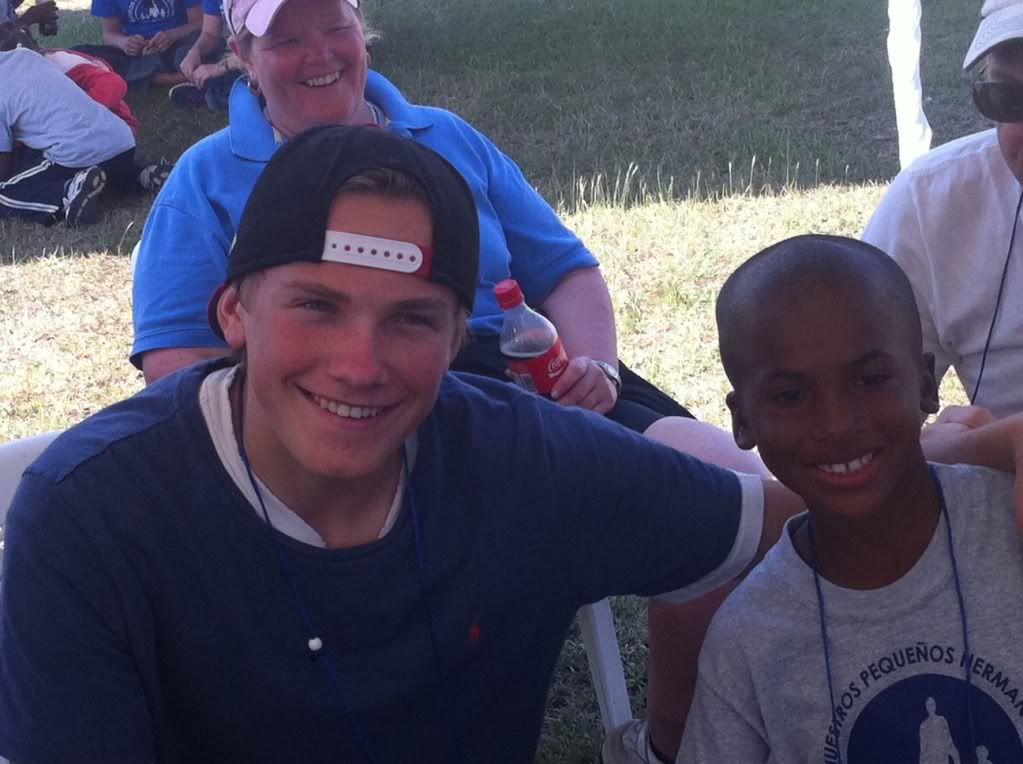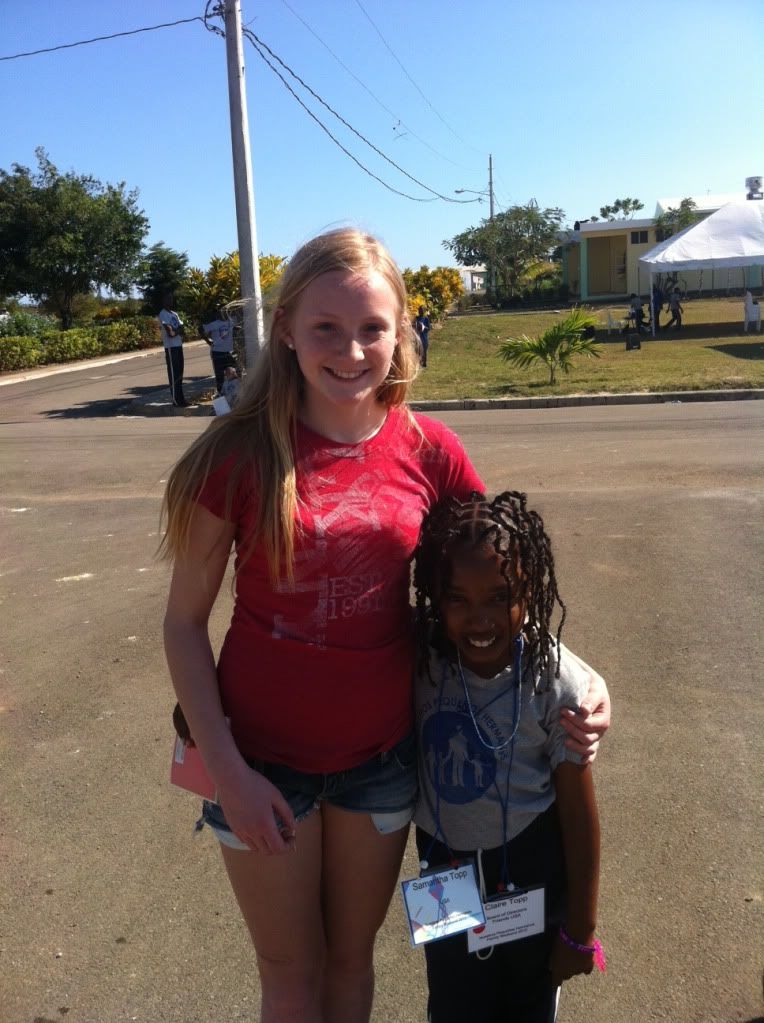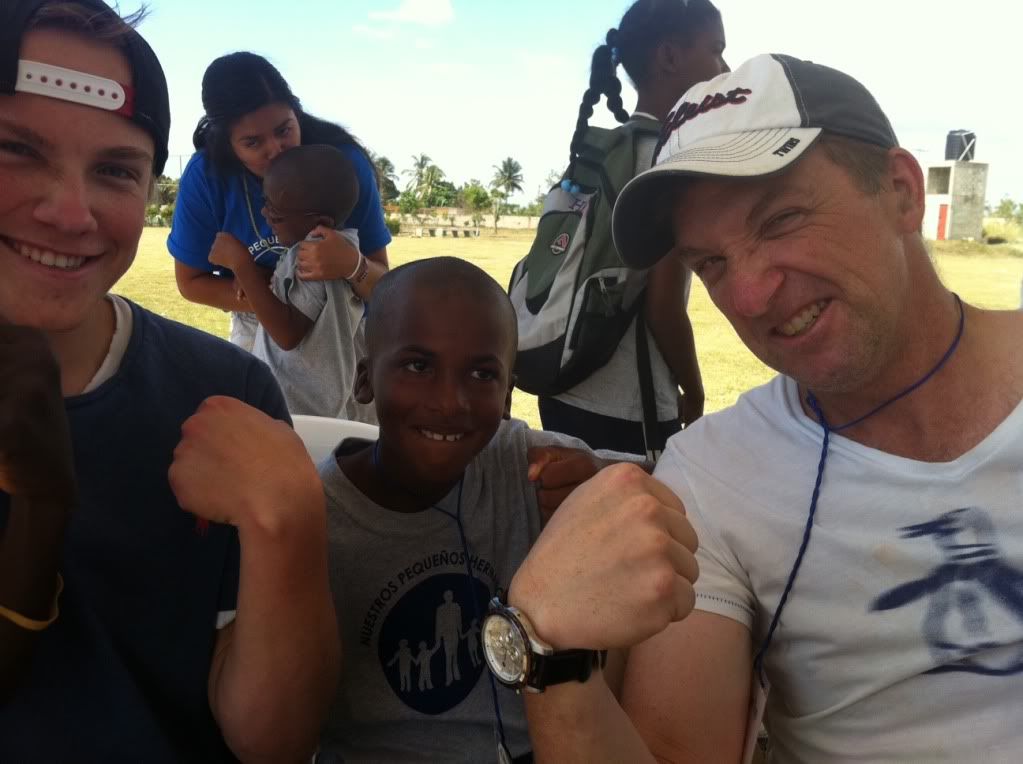A tall teenager steps into the batting cage. He has the grace of an athlete and it is obvious from his movements and size why he is considered a prospect. Other participants have sprayed balls all over the field. This prospect, however, has a loop in his swing so severe that batting practice fastballs expose it such that he either misses entirely or pops the ball weakly to the top of the batting cage. The instructor tries to get him to hit balls on the ground but the loop remains.
I am sitting in a small set of bleachers at the Milwaukee Brewers’ Dominican development camp. From the perspective of a Midwestern suburbanite, the place seems Spartan – 6 beds to a room, a remote location with farm fields all around, a weight room with minimal equipment and baseball fields that are well maintained but look a bit worn around the edges. For the participants, the place is a luxury. Air conditioning exists. Food is nutritious and plentiful. The staff includes a fitness trainer, medical staff and top quality coaching. The club provides training in English and other skills hoping to make the transition to the minor leagues more achievable. Players throughout the country hope to be signed by a major league club and included in a facility such as this.
The pressure these players feel must be tremendous. Their lives consist of baseball training 6 days a week – practice in the morning, followed by a game followed by individualized skill work and physical training. Of 35 players in this camp, 13 are soon headed to minor league spring training. There they will hope to make the Arizona Instructional Rookie League. A similar number from that league will advance to a regular Rookie League Team. After that, low A, high A, double A and Triple A stand as obstacles to the major leagues. Failure at any level means a return to home.
Home in the Dominican Republic looks to be a difficult challenge for most. Kids play in the ruins of a shack by swinging sticks at each other. Signs of poverty and violence lurk.
Driving involves a wide variety of vehicles following two rules – don’t swerve and the bigger vehicle has the right of way. You do not swerve because of a never ending series of mopeds and small motorcycles darting around the car. The right of way rule applies regardless of road signs. I am thrilled to see my first stoplight and surprised to see the cars respond by accelerating. Stopping at a red light can be perilous because such action is unexpected – somewhat like stopping on an entrance ramp to a freeway in the U.S. Everyone seems friendly on the road but after watching one kid on a bike pull out a large handgun, I find it a bit more serious.

The baseball facility reminds me of a place where children are given the chance to lead a productive life that is not dependent on their baseball skill. Nuestros Pequeños Hermanos (NPH) gives children from extraordinarily difficult circumstances a home, food, education and love. The organization is tremendously successful with such efforts and my family regularly visits their homes located in countries throughout Central America, Haiti and the Dominican Republic.
The purpose of our visit is to meet two children we sponsor in NPH’s Dominican home – Esterlín and Anna Maria. Esterlín is 11 years old, small, loves soccer and has a gang of friends that are rambunctious and friendly. Marks on his head bear testament to a difficult early childhood. Anna Maria is ten, very shy and timid. Her caretakers report that four sentences a day are her maximum – residue from parental neglect.
Esterlín and my son McKinley:

Anna Maria and my daughter Samantha:

We attend a wedding with the children, and enjoy a celebratory dinner and awkward communication. I resort to old parent tricks of rock paper scissors and a game where everyone puts their hands on a pile and the bottom one moves to the top. It is unclear what Anna Maria thinks of us and at one point she leaves us. We look around for her and she returns holding a friend’s hand and instructs her friend to give each of us a hug. She then brings her friend back and returns with another. She repeats the process until we had hugged about a dozen little girls.
We return the next day and all of us are more comfortable with each other. The boys bring my son and me to their baseball field for a sandlot game. My 45 year-old shoulder no longer is capable of a throw from third to first. After a couple of hours we transfer to the soccer field and I learn I stink at soccer and am out of shape.
I must admit that the motivation for sponsoring these kids is not entirely charitable. When I was a child my mother bought The World Atlas of Golf as a coffee table book. The name Cajuiles struck me as magic. The idea of seven holes jutting out into the ocean seemed beyond comprehension. Ever since that time, I dreamed of playing the Teeth of the Dog and recognized that the Casa de Campo resort was not far from the NPH home.
Bryan Izatt Profile: http://www.golfclubatlas.com/in-my-opinion/bryan-izatt-review-of-teeth-of-the-dog-casa-de-campo/
Mike Hamilton Photo Tour
http://www.golfclubatlas.com/forum/index.php/topic,47533.0.htmlThe Teeth of the Dog design takes a simple concept – greens jutting out into the ocean – and varies the concept such one does not notice repetition. The fifth hole involves a short iron to a small green with the wind behind and from the left. The seventh required a hybrid to a comparatively larger green with sufficient slope such that a bailout right leaves a difficult two putt. The 17th is more intimidating – requiring a midiron into the wind to a green angled left to right. Sprinkled among those holes are a variety of par fours ranging from short to long and with a variety of green complexes that avoid repetition.
The inland holes feature sound strategic designs that will be familiar to those that have played Pete Dye’s best courses. The par fives are particularly good as they range in distance from easily reachable to a tabletop green perched high above grade to a long par five uphill to a green benched in a hillside.
I played with a couple from New York that had a very enjoyable approach to golf. After a bad shot or two, they picked up. Neither was a strong player but both were a pleasure to spend time with. My caddie was of the highest quality and has a son who is a baseball player and is a former shortstop himself. He easily handled my errant ball tosses on the greens.
One drawback to a famed resort course is the fact that a large number of very poor golfers need to get around the course. No doubt due to this practical consideration, large waste areas were maintained without edging and with a small amount of sand such that an errant shot generally skipped through. The greens were also heavily watered so that any iron shot landing on the green was sure to stop. I suspect the course would be much more interesting with different maintenance practices.
Teeth of the Dog at Casa de Campo is my February course of the month. Our family has a general rule that we never travel to the same destination twice. That rule will be broken in this instance. I look forward to returning again soon to see Esterlín, Anna Maria, winter baseball and feeling the warm breezes off the Caribbean Sea. I hope the kid in the batting cage gets the loop out of his swing. I am more optimistic about Esterlín and Anna Maria’s prospects.
If you are interested in supporting children such as Esterlín and Anna Maria, follow this link:
http://www.friendsoftheorphans.org/s/769/start.aspxYou will find the experience worthwhile regardless of whether you visit Casa de Campo:
